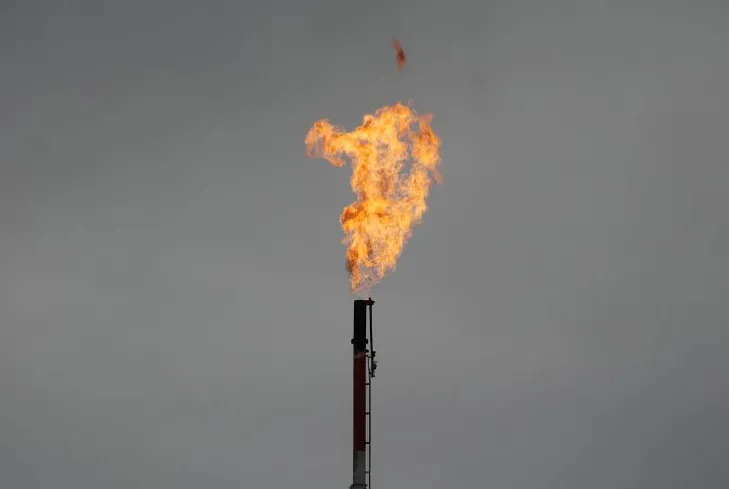The following narrative isn’t for the light reader, The details around ensuring that rules to reduce methane emissions are successful may be dense and daunting, but they are important matters, as you will come to know if you read on.
On July 28 the Canadian government concluded the public comment period for the federal methane regulations, which are still in draft form. Whatever they finally look like, the regulations will be critical to reducing current and future methane releases from Canada’s oil and gas industry. These draft regulations incorporated lessons from methane regulations implemented in the U.S. and enable Canada to learn and catch up to those U.S. methane regulations.
Cost-effective
The federal government estimates operators can comply with the proposed provisions at an estimated net cost of $10 per tonne, well below most Canadian carbon pricing schemes in place today. Further, the 282 million tonnes of greenhouse gas (GHG) reductions expected between 2018 and 2025 are expected to result in $13.4 billion in avoided climate change-related damages and $1.6 billion in gas savings for operators. These benefits are also underestimated since they don’t consider the health benefit from the reduction in volatile organic compounds and other harmful air pollutants that typically accompany methane releases. The avoided climate costs and additional gas savings are far in excess of the compliance costs for these regulations, resulting in a set of provisions that will secure net societal benefits of $11.7 billion for all Canadians.
Further to these estimates, research suggests the amount of methane emissions from the upstream oil and gas industry are tremendously underestimated. Targeted studies have found real methane releases in the oil and gas sector could be as high as 90 per cent greater than we think. These real world results raise the risk that the regulations are drafted for our current, known, emissions and aren’t designed to manage real emissions. Since the proposed regulation will also address these unreported methane emissions, it will likely be even more cost-effective than current estimates indicate. Benefits associated with the regulation will certainly be greater than those estimated in the Regulation Impact Analysis Statement published with the proposed regulations.
Recommendations
That’s why we’ve advocated for enhancements to fine tune the regulations and make for more stringent methane regulations, in order to better align compliance costs with a carbon price level of $50 per tonne and demonstrate Canada’s commitment to reducing these emissions. This carbon price level will be reached by 2022 as outlined by the federal government. We believe there is room to enhance the federal proposal to ensure that as we improve our knowledge of these releases we can remain on track to meeting Canada’s commitment for a 45 per cent reduction by 2025 while maintaining fairness between all sectors of the Canadian economy.
Our recommendations for the federal methane regulations are:
1. Start getting reductions earlier (and regain some of the emissions reductions lost as a result of significant timeline changes) by implementing regulations in 2022 instead of 2023 for venting and pneumatics.
2. If the provinces want to create their own “equivalent regulations,” ensure the equivalency agreements achieve an equivalent (or greater) amount of cumulative methane emission reductions between 2018 and 2025 as the federal regulations, and include the application of a carbon levy towards all fuel combustion emissions at upstream oil and gas facilities, beginning in the same year as the federal carbon tax proposal.
3. Require zero-emitting options to replace pneumatic equipment at sites with three or more pneumatic controllers as well as at sites with two or more pneumatic pumps.
4. Remove the 40,000 cubic meters per year venting exemption from the potential to emit (PTE) – or, if the venting limit is not removed, make sure all emission sources at a site are included under the limit including methane emissions coming from incomplete combustion from flares.
5. Require operators to actually directly measure the total facility gas production every three months, rather than make estimates. At sites without permanent gas production or vent gas meters onsite, dramatically improve the estimation process is by conducting quarterly gas-oil ratio tests, each for a 7-day period, using a totalizing meter to smooth out fluctuations in gas production, or operators can instead choose to install continuous metering equipment on all casing gas vents.
6. To create transparency and improve credibility require monthly reporting to a publicly accessible data management system for all methane venting emissions data at a facility level. Annual performance reports must be published to track progress against the 2025 emission reduction targets using this monthly data.
7. Modify the regulation to clarify that as part of a comprehensive leak detection and repair (LDAR) program, operators must also inspect all equipment designed to vent methane on either a continuous or an intermittent basis in order to identify failures causing excessive venting and require immediate repair of any such improperly operating equipment. This action is critical to prevent large emissions sources commonly referred to as “super-emitters,” that arise unpredictably but can become large sources of methane.
8. Methane is an important energy resource. To avoid wasting it, require operators to capture emissions, rather than burn them off. Where it is not feasible to capture methane, specify all combustors and flares (control devices) achieve a 98 per cent destruction and removal efficiency (DRE) to minimize methane releases from control devices.
These adjustments aligns the regulations with those already in place in U.S. jurisdictions and helps to demonstrate Canada’s commitment to tackling climate change. We urge the federal government to finalize the proposed rules expeditiously, including these recommended improvements. These regulations demonstrate a real commitment to reducing the Canadian oil and gas industry’s contribution to climate change.






